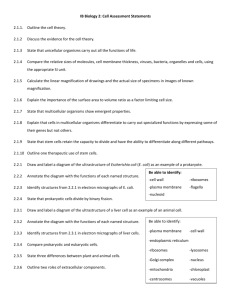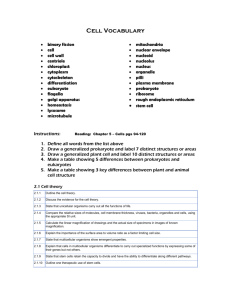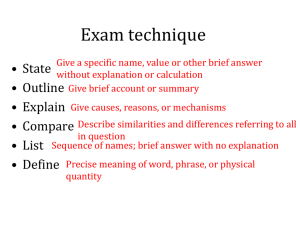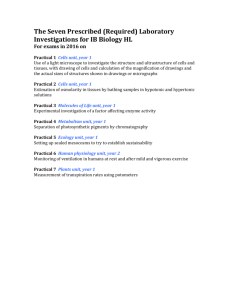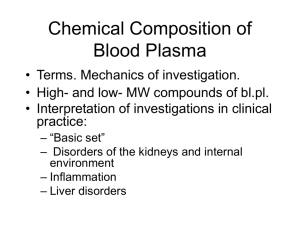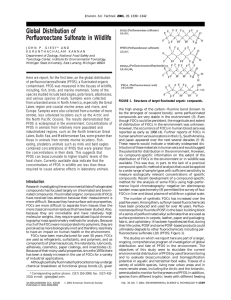File
advertisement
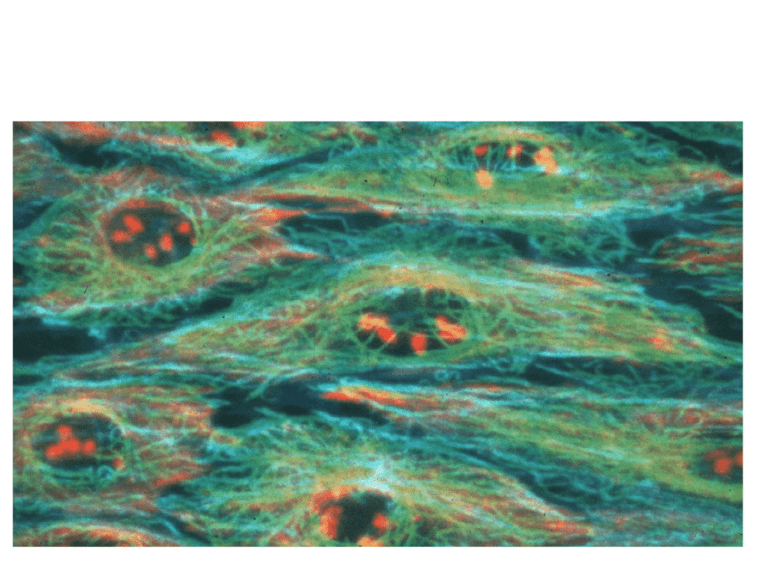
2.3.1 Draw and label a diagram of the ultrastructure of a liver cell as an example of an animal cell 2.3.1 Draw and label a diagram of the ultrastructure of a liver cell as an example of an animal cell 2.3.2 Annotate the diagram with the functions of each named structure 2.3.2 Annotate the diagram with the functions of each named structure Visit this page, it’s very helpful. http://click4biology.info/c4b/2/cell2.3.htm 2.3.3 Identify the structures in 2.2.1 in electron micrographs of a liver cell Go to http://sciencevideos.wordpress.com/bis-ib-diploma-programme-biology/02cells/eukaryotes/ Slide number 7 for the answers http://www.biologie.uni-hamburg.de/b-online/library/onlinebio/01541a.jpg 2.3.3 Identify the structures in 2.2.1 in electron micrographs of a liver cell Identify the cell organelles and structures below. Nucleus Rough endoplasmic reticulum Plasma membrane 2.3.3 Identify the structures in 2.2.1 in electron micrographs of a liver cell Identify the cell organelles and structures below. Mitochondrion Golgi Apparatus Lysosome 2.3.4 Compare prokaryotic and eukaryotic cells 2.3.4 Compare prokaryotic and eukaryotic cells 2.3.5 State three differences between plant and animal cells 1. Cell wall Plant cells – cellulose cell wall and plasma membrane Animal cells – only plasma membrane 2. Chloroplasts Plant cells – present in photosynthetic cells Animal cells – do not have them 2.3.5 State three differences between plant and animal cells 3. Vacuole Plant cells – have a large permanent vacuole that is filled with cell sap Animals cells – have small and temporary vacuoles bioweb.wku.edu 4. How food/energy (carbohydrates) is stored Plant cells – carbohydrates are stored as starch and plant oils home.comcast.net Animal cells - carbohydrates are stored as glycogen and animal fat 2.3.6 Outline two roles of extracellular components Extracellular component – a non-living secretion of a cell (for example cellulose and cartilage) Role of cellulose Provides support and strength for the cell and tissues of the plant When the plant cell takes in water, it limits how much water can be taken in, and also prevents the cell from bursting. This also gives the cell strength and support (called turgor) http://kscience.co.uk/animations/turgor.swf Provides a barrier against disease and other pathogens treehugger.com 2.3.6 Outline two roles of extracellular components Roles of cartilage Gives cushion and lubricates the joints between bones Also provides structure to features like the ears and nose
